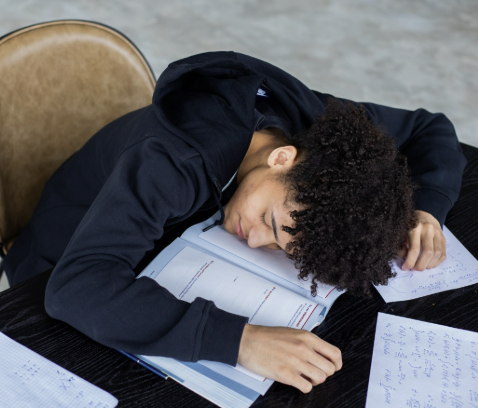Taking effective study breaks is an important part of successful learning. While it might seem like stepping away from schoolwork wastes time, research shows that well-planned breaks can actually improve concentration, reduce fatigue, and help students absorb information more effectively. In high school, where schedules are often packed and demands are high, learning how to make the most of study breaks can lead to better academic performance and improved well-being.
The key to a productive break is balance. A good break should relax the mind without pulling students too far away from their learning mindset. Activities that are too stimulating—like playing intense video games or scrolling endlessly through social media—can make it harder to return to studying with focus. Instead, students should aim for short, refreshing activities that help recharge their energy.
One of the most effective types of study breaks involves physical movement. Even a short walk, light stretching, or a few minutes of jumping jacks can increase blood flow and wake up the brain. Physical activity helps reduce stress, improve mood, and reset attention, especially during long study sessions. For students who sit for extended periods, movement breaks are essential for staying mentally and physically healthy. Yoga poses, dance breaks, or stepping outside for fresh air can all offer both mental and physical rejuvenation.
Mindful breaks are another powerful option. Deep breathing exercises, guided meditations, or simply closing your eyes and relaxing for a few minutes can calm the nervous system and enhance clarity. These quiet moments allow the brain to process information and return to learning with renewed focus. Apps and online resources make mindfulness easy to incorporate into even the busiest routines. Students who regularly practice mindfulness often report better emotional regulation, improved concentration, and greater self-awareness.
Creative activities like doodling, listening to music, or writing in a journal can also be effective break strategies. These types of breaks engage different parts of the brain, offering a shift in perspective while keeping the mind active. Creative outlets can inspire new ideas, improve memory retention, and help students stay motivated. Some students may enjoy sketching, doing quick puzzles, or practicing an instrument between study sessions.
Social breaks—brief check-ins with family or friends—can lift spirits and provide emotional support. A five-minute conversation, quick phone call, or shared laugh can help reduce academic stress and build stronger connections. However, these interactions should be timed carefully to avoid losing track of study goals. Setting limits on socializing during breaks ensures that the study routine remains productive and consistent.
Hydration and nutrition breaks are equally important. Drinking water and having healthy snacks like fruit, nuts, or yogurt can replenish energy and support brain function. Avoiding heavy meals and sugary treats helps maintain consistent focus throughout the study session. Preparing snacks in advance and keeping water within reach helps students make healthy choices easily.
The length and timing of breaks matter. Short breaks (5 to 10 minutes) every 25 to 30 minutes work well for most students. After a few study cycles, a longer break of 15 to 30 minutes can offer a more complete reset. Using timers or study apps with break reminders helps students stay on track and avoid overextending their time away. Structured routines allow for consistent breaks without losing momentum.
Students can also experiment with different types of breaks to find what works best for them. Some may benefit from active breaks, while others may prefer quiet time. The key is to observe how different break styles affect focus and productivity. Keeping a short log or journal of study sessions and break activities can help identify the most effective patterns.
Incorporating variety into break time can keep the brain engaged. Alternating between physical, creative, and reflective breaks throughout a study session offers a well-rounded approach to recharging. A student might begin with a walk, then later take a break to listen to a calming playlist, and end with a quick sketch or gratitude journal entry. Variety prevents boredom and keeps energy levels balanced.
Schools and teachers can help reinforce the value of study breaks by modeling good habits, incorporating brain breaks into lessons, and encouraging students to find what supports their learning style. Parents can support at home by creating calm, structured environments and helping students understand that stepping away from work can be an essential part of success.
Ultimately, breaks are most beneficial when they’re intentional. Planning breaks ahead of time, choosing restorative activities, and returning to work with purpose make study sessions more effective. When students understand how to use their break time wisely, they boost their productivity, protect their health, and make studying a more manageable part of everyday life. Learning how to balance effort and rest builds habits that will serve students not only in school, but throughout life.


